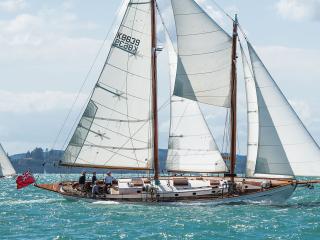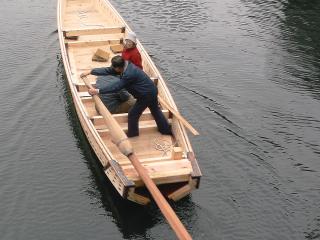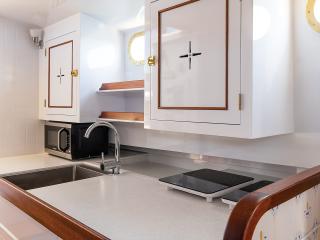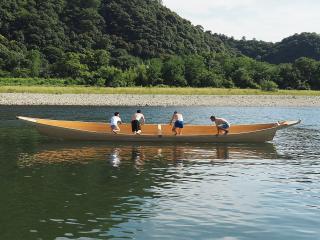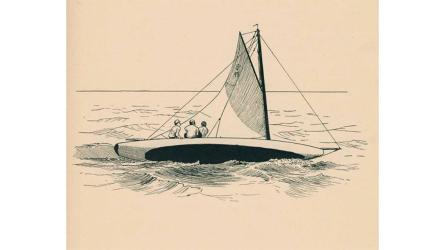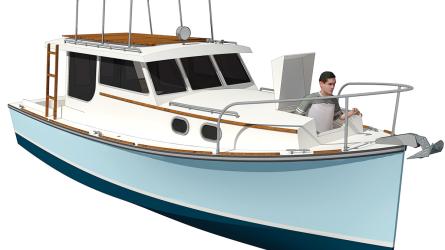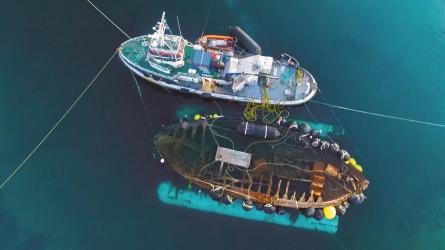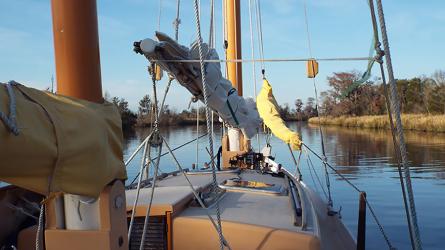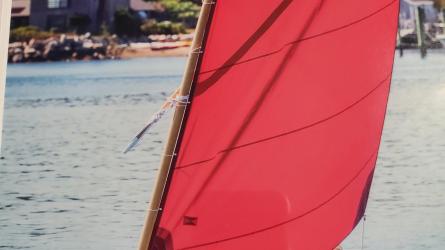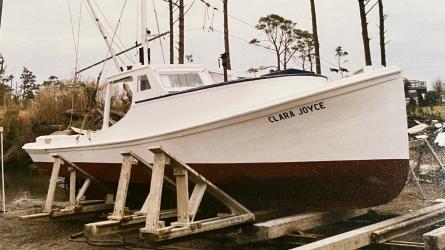May / June 2021
Building Box-section Masts with Plywood
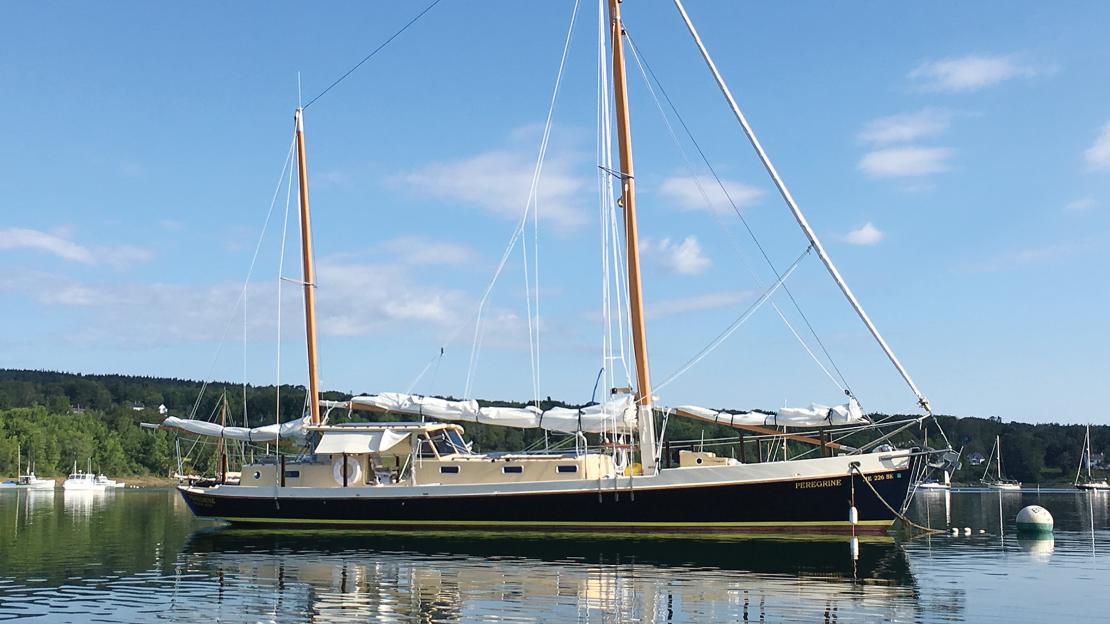
Reuel Parker designed and built the 43’ ketch PEREGRINE for his own use. The box-section main and mizzen masts are both made of easily sourced Douglas-fir plywood. They have proven themselves at sea on several successful cruises between Parker’s home ports of Brooklin, Maine, and the Bahamas.
My preferred way to build hollow masts has been, for two decades, the bird’s-mouth method (see WB Nos. 268 and 149). I have also made traditional box-sectioned hollow spars using solid wood. The common box-spar method involves making the forward and after components from thick material, the edges of which are rabbeted to receive thinner material for the sides. Many thousands of spars have been made with this method, which dates to the mid-19th century.
I have designed several rotating wing masts of plywood, but a few years ago it occurred to me that box-sectioned spars of lighter weight than the usual solid-wood construction could be designed and built of plywood and solid-wood corners. Because the loads on masts are primarily vertical and circumferential, plywood intuitively seems a good choice. Solid wood has only moderate tensile strength across the grain, while marine plywood has excellent tensile strength in all directions. Hence, I developed a “new” mast design based on this concept. (I do not doubt that other sparmakers have thought of this and utilized it).
To read the rest of this article:
Click the button below to log into your Digital Issue Access account.
No digital access? Subscribe or upgrade to a WoodenBoat Digital Subscription and finish reading this article as well as every article we have published for the past 50-years.
ACCESS TO EXPERIENCE
Subscribe Today
1 YEAR SUBSCRIPTION (6 ISSUES)
PLUS ACCESS TO MORE THAN 300 DIGITAL BACK ISSUES
DIGITAL $29.00
PRINT+DIGITAL $42.95
Subscribe
To read articles from previous issues, you can purchase the issue at The WoodenBoat Store link below.
 Purchase this issue from
Purchase this issue from
